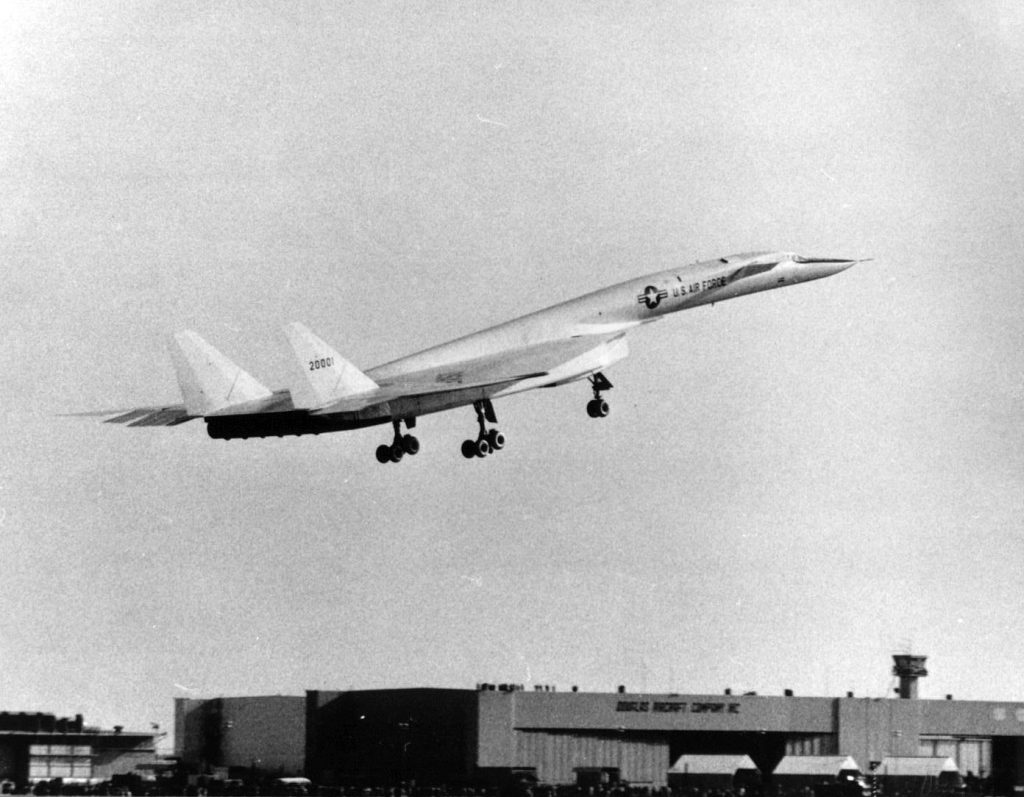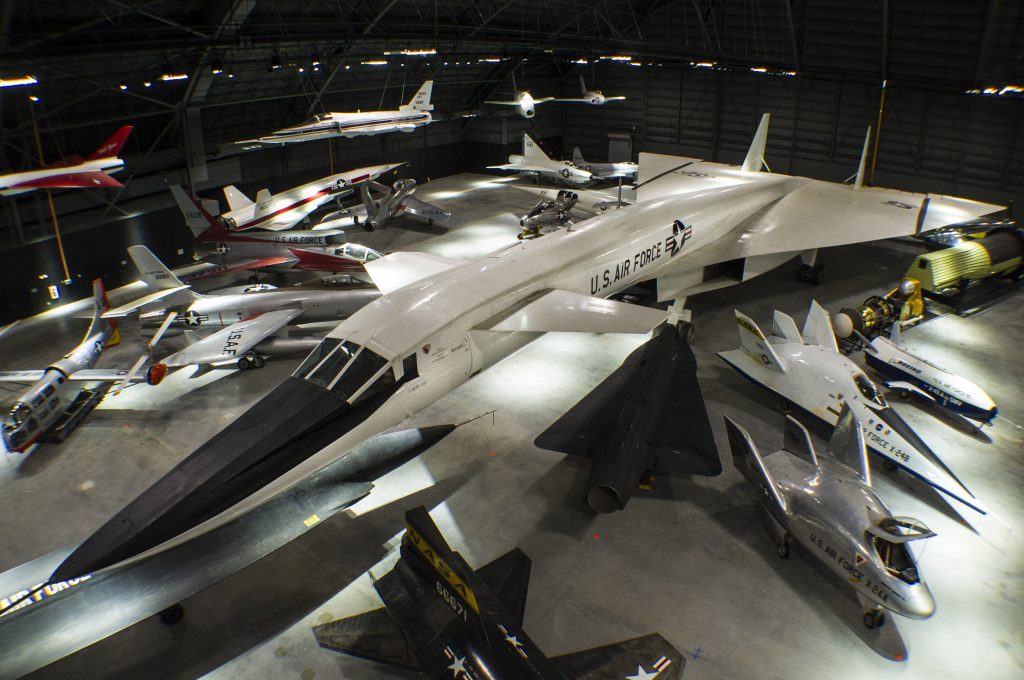
Note: Doctor Aviation has been on a hiatus attending to family matters. He returns with his favorite aircraft of all time.
The XB-70 is my favorite aircraft of all time. It made its maiden flight on September 21, 1964. This is its story.
The Design
The XB-70 was designed as the replacement for the B-52 bomber. The X signified experimental, the B for Bomber. By the early 1960s the Air Force and specifically Strategic Air Command, under the watchful eye of General Curtis LeMay, had assembled the Boeing B-47 Stratojet, the B-52 Stratofortress and the Convair B-58 Hustler as its bomber arsenal. The Air Force was seeking a quantum leap in its next bomber design.
The XB-70 was designed by North American Aviation. The team went to work in their Palmdale California plant. The idea behind the bomber was simple. Fly high and fly fast. The theory was the plane would be impervious to Soviet jet trying to intercept her.
The XB-70 was designed to fly at Mach 3.0 at 70,000 feet. At the time of its design with these specifications, no Soviet plane proved a worthy opponent.
The Maiden Voyage

The first flight was a short hop from Palmdale to Edwards AFB. At the controls were Air Force Colonel Joseph Cotton and Alvin White a North American Aviation pilot. The tail number was 62-0001. The flight was uneventful, but the jet itself was anything but plain.
The bomber was powered by six General Electric jet engines. Each was capable of producing 28,000 lbs. of thrust. The engine was so sophisticated that it required special fuel: JP-6, which was particularly heat resistant.

The wings were delta shaped (popular at the time, e.g. B-58, F-102, F-106) and huge. The wing had a total area of almost 6,300 square feet. To reduce weight, the wings employed an innovative, honeycomb design.
The plane flew over 83 flights. Test flights were, from what I can ascertain, successful, however, outside events doomed the plane. The major development was the advent of effective Surface to Air Missiles by the Soviet Union. The downing of Gary Francis Powers in the U-2 demonstrated the Soviets ability (even if by luck) to down a high-altitude jet. Soviet interceptor jets were also rapidly improving.
The plane was nicknamed the Valkyrie and 62-0001 now rests at the Air Force Museum in Dayton Ohio fifty-six years after her maiden voyage.

For more information see: https://www.thisdayinaviation.com/
